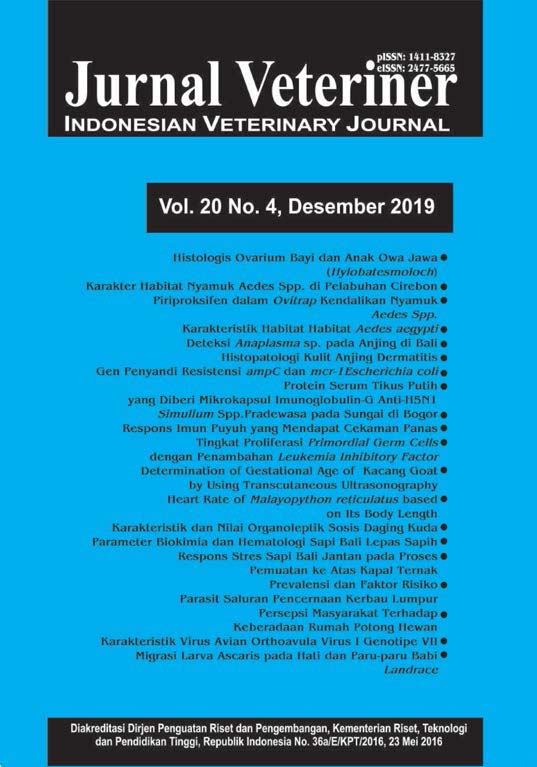Evaluasi Piriproksifen dalam Ovitrap untuk Mengendalikan Nyamuk Aedes Spp. pada Skala Semi Lapang (SEMIFIELD SCALE EVALUATIONS OF PYRIPROXYFEN IN OVITRAP FOR CONTROL AEDES SPP. MOSQUITOES)
Abstract
Ovitrap is an alternative mosquito control method that used to reduce the population of Aedes spp, vector of dengue hemorrhagic fever. This study aims to evaluate pyriproxyfen in ovitrap to control Aedes spp through the mechanism of autodissemination by these mosquitoes on a semifield scale. The research was carried out from August to October 2018 in the outdoor environment of Braja Mustika Bogor Hotel. Ovitrap used consist of two types, namely In2Care traps the which contained insecticide of pyriproxyfen, Beauveria bassiana and yeast, (2) the standar ovitraps (without insecticide). In2Care trap (30 pieces) was installed with a distance of 400 m2/trap, while the standard ovitrap (10 pieces) with a distance of 4 m randomly around In2Care trap. Observations were conducted once a week for two months. The parameter observed in In2Care trap was the number of larvae and pupae Aedes spp, which live and dead. The observations on standard ovitrap were the presence of Aedes spp eggs, the number of larvae pupae and adults that eclosed. The results showed that the In2Care traps effectively attracted Aedes spp to laid eggs and breed (86.7-100.0%). The number of larvae observed in In2Care trap ranged from 10-50 larvae (33.380.0%) and all larvae that developed in In2care trap (100%) died after being kept in the laboratory for two months. The results of observations on standard ovitraps showed that there were dead pupae (22.7-80.8%) and adults that failed eclotion (22.6-83.6%) during 2 months of observation. The results showed that there was the effective mechanism of pyriproxyfen autodissemination by Aedes spp from In2Care traps to standard ovitraps when laying their eggs.



















